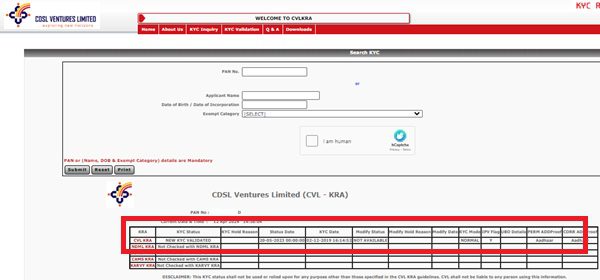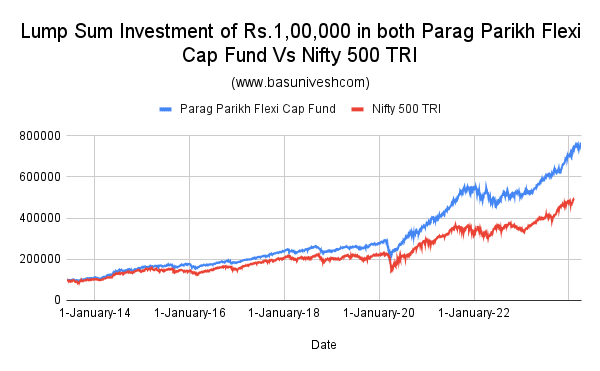Recently SEBI proposed (on 13/02/2014) one of the wonderful pension product called Mutual Fund Linked Retirement Plan (MFLRP). The main emphasis of this plan are to bring in more investors into equity and retirement planning, flexibility and more tax sops. Such features lacking in NPS or in any other current retirement products.

Currently in India only around 12% of existing workforce is covered under retirement benefits. Also majority of NPS contributor are from Government Employer. Hence the need of product which caters to all was felt and accordingly this scheme was proposed.
As of now in India only two mutual fund companies offer retirement product. One is from UTI Mutual Fund, which is called UTI Retirement Benefit Pension Fund and another is from Franklin Templeton, which is called Templeton India Pension Fund. Whatever you contribute to these funds will be automatically eligible for Sec 80C of IT Act, 1961. These two funds were launched on 26th December 1994 and 31st March 1997 respectively. But after that none of the mutual fund companies tried to launch such retirement product as new scheme does not automatically qualify under this tax deduction.
Features of Mutual Fund Linked Retirement Plan (MFLRP)-
- Any Indian citizen (resident or non-resident), whose age between 18 years to 55 years will be eligible for MFLRP.
- There will be some minimum yearly contribution required from participant and SEBI proposed penalty for participant who not maintain their account active. How much will be yearly contribution is still yet to know.
- There will be lock-in for your investment for example 5 years.
- But contribution made after 55 years would be locked-in till participant attains the age of 60 years.
- Participant can withdraw 100% after attaining 60 years of age.
- But one can withdraw before 60 years of age also if contributions are free from lock-in (subject to exit-load).
- Full withdrawal before participant attains 60 years of age will in some special cases like death of participant, permanent disability or terminal illness. Such emergency withdrawal will not have any exit loads.
- After 60 years of age one can opt either lump sum withdrawal or in a phased manner.
- Phased withdrawal will be through Systematic Withdrawal Plan (SWP). Such SWP will be either on monthly, quarterly, half yearly or yearly.
- Again in this phased withdrawal option, one can choose the flat amount or % of the balance.
- You can increase your withdrawal limit yearly to match the inflation.
How to contribute to MFLRP?
- Whether you are self employer or salaried, being participant you can directly contribute to MFLRP.
- If you are salaried then your employer have option to contribute to this scheme by matching contribution from their end. But employer contribution will be decided by individual employer.
Which mutual fund schemes are eligible for MFLRP?
- Funds that own securities directly and meet the asset allocation and other criteria prescribed by MFLRP.
- Fund-of-Funds of the existing schemes of mutual fund companies. But to qualify under this category, the underlying fund must have minimum 3 years track record, minimum monthly AUM of Rs.300 Cr in the presiding 36 months and diversified funds but not sector specific funds. Such Fund-Of-Funds will not be allowed to charge an additional fee.
How asset allocation will be done in MFLRP?
You have three options to choose based on your comfort.
- This plan proposes to be age linked asset allocation. Hence as you grow older, your equity exposure will get reduced accordingly.
- Another type of allocation is based on “Investor Risk Profile” based. This will be like for conservative portfolio 0-30% in equity, moderate portfolio 50-65% in equity and an aggressive portfolio 50-100% in equity.
- But irrespective of age and risk profile of participant, if one reaches the age of 55 years then his portfolio will be switched to age linked asset allocation.
Switching facility in MFLRP–
- One can easily switch from different asset allocation model.
- One can switch from MFLRP of one mutual fund company to another company without capital tax implications freely.
Proposed Tax Incentive in MFLRP–
- An additional Rs.50,000 tax benefit be allowed and this will be above and over Rs.1,00,000 limit of Sec 80C.
- Also if any unutilized amount within Rs.1,00,000 under Sec 80C may be allowed to invest in MFLRP and get deduction under Sec 80C.
- This product must be E-E-E. Means whatever you invest under this scheme will be tax deduction, accrued income from this scheme will be tax exempt and finally withdrawal also be tax exempt. Currently PPF scheme have such facility.
- For salaried, employer+employee benefit will be considered for calculating tax benefits.
- Contributions made by employer towards this scheme will be treated as “Business expense” in the Profit & Loss Account of Employer.
- Finally any switch of MFLRP between mutual funds may not be treated as transfer and exempted from capital gain tax.
My view about MFLRP–
Currently this plan is just a proposal from SEBI, but in my view it is in right direction. Eventhough NPS was launched with much fanfare as lowest retirement product, but it failed to garner the subscriber list. Hence I hope that this plan with so many proposed tax benefits, flexibility to investors and best alternative to NPS will be a huge success. Below are some positive points of this scheme.
- Lock is just 5 years.
- 100% withdrawal after 60 years of age.
- If withdrawal is in phased manner then plenty of options like monthly, quarterly, half yearly, yearly or increasing your withdrawal based on inflation.
- No compulsion to buy any annuity plan after retirement.
- Plenty of funds under which one can invest through this scheme.
- Convenient asset allocation strategy.
- Easy switch facility among funds.
- Huge tax advantages proposed.
Image courtesy of [ Stuart Miles] / FreeDigitalPhotos.net










28 Responses
Hi Basu,
I am planning to invest 3000 to 5000 per month for long term (10 to 20 years).Please suggest me from which bank I can do SIP investment.
Aditya Birla Money SIP investment is good or not, Please suggest me some good SIP agency or bank.
Devaraj-If your idea is to go through an adviser, then my personal choice will be FundsIndia.
Thanks, Basu.
Is this scheme launched and available with MF companies ? Or should we wait for some more time ?
SmartVP-It is not yet available.
hi sir.
thank you so much for ur valauable suggestions as mentioned in the article can we invest in UTI mutual fund/franklin fund retirement plan or wait for this new policy to come in
Amar-Let us wait and watch.
Hello Basu,
My company just proposed employees to invest in NPS max 10% of Basic. It is optional. but i am looking for some saving for retirement. Do you think i should go ahead with NPS or go with something else?
Regards,
Smitha
Smitha-As of now NPS looks bad when it comes to taxation and liquidity issue. But in future let us hope for better. But in my view creating your own retirement corpus by investing regularly into equity (if plan is for long term) will give you rich dividends. But it again your comfort with equity and periodical review.
Thank you Basavaraj. I need one more advice from you i would like to invest 2L in one shot for 10 years for my child education. Please let me know where to invest planning to invest by next month. I am very confused and don’t want to do any mistake and I am ok with moderate risk.
I really Appreciate your effort and a very quick response to our queries 🙂
Smitha-If you are planning to invest for long term view then my suggestion is to pick around 4 funds from each category from my old post titled “Best 10 Mutual Funds to Invest in India for 2014 ” and instead of investing at one shot, I suggest you to park in liquid funds of respective mutual fund companies and opt for STP.
Thank you for response. But i didn’t understand “I suggest you to park in liquid funds of respective mutual fund companies and opt for STP” part. Can you please elaborate or provide link of article if already available
Thank you for response. But i didn’t understand “I suggest you to park in liquid funds of respective mutual fund companies and opt for STP” part. Can you please elaborate or provide link of article if already available
Smitha-Investing lumpsum is risky than going for monthly SIP. This you can do by by first investing in liquid fund (say HDFC Liquid Fund) of same mutual fund company where you want to invest (say to HDFC Top 200 Fund) for your kid’s future. Your liquid fund investment will earn lesser but stable amount and from this invested amount monthly SIP will be done as through the route of transfer from liquid to equity fund.
thank you basavaraj. I will check this.
Basavaraj,
can you please suggest me some good option which liquid fund to equity will be good for STP?
Smitha-There is no such choice as your target is mainly on moving to equity slowly. So select first the equity funds you want to invest. Based on that you can go with liquid funds (there is hardly anything matters to choose best liquid fund within a mutual fund company).
Let me clarify. STP stands for Systematic transfer Plan. What Basava has recommended is that instead of making it a one time investment, you should follow a systematic investment approach (e.g monthly investments) . This will allow you to average your investment over a period of time. Parking in liquid funds shall allow you to keep getting a decent return on your current excess funds while planning this activity.
e.g, you have Rs. 1L parked in Liquid funds, you can do a STP of Rs. 10000/- monthly in Mutual funds . The Amount in Liquid funds should give u returns in the range of 8-9%, while the monthly investment in Mutual funds will ensure average costing not impacted by one time price
Ajay-Well explained 🙂
Thanks Ajay 🙂
Hi,
I am a salaried employee. Is it mandatory to involve employer also to this. Can’t I invest myself.
WHat is the investment details like what amount to be invested and what % return will I get..
need more data on that part..
Sridhar-It is not mandatory to involve them too. It is still at proposal stage. Let them come out with details soon.
Wow, such a beautiful and simple article. I heard it first from you. Thank you basu!!
Krantivir-Pleasure 🙂
Good informative article
Hrishikesh-Thanks for your comment. Also sorry, because your comment moved to Spam folder. Hence was unable to reply soon.
Good one! Good to know about the existing plans.
How do we compare these with Pension plans from Insurance companies?
bemoneyware-This plan is still in it’s nascent stage, so let us wait and watch. But I feel that our retirement corpus within the existing funds and so many tax sops will give an upper hand to pension plans of insurance companies.